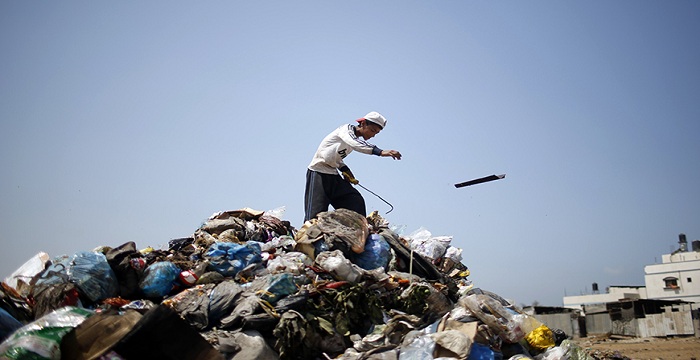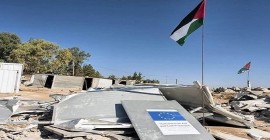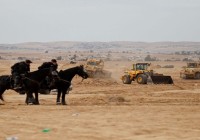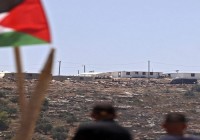Gazas Garbage: a Source of Livelihood and Pollution at the Same Time
Garbage is considered a profitable business in many developed countries. In Sweden, for example, around 4.4 million tons of garbage are collected annually. In Gaza, garbage leads to pollution and the spread of diseases and rodents. However, it is also a source of livelihood for some children, dubbed as “scavengers,” who pick plastic and metal out of the waste in order to sell them for a small price.

Written by: Hanin Hamdouneh - Palestine Economy Portal Translated by: Hakim Odeh
Shehadeh, a ten-year-old boy, was forced to leave school and work among the bags of trash after the separation of his parents, which left him, his two brothers, and mother without any provider. He collects plastic into a sackcloth, and extracts metal from wires after burning them. He then sells them by weight to one of the scrap sellers in the Northern Area of the Gaza Strip where he lives.
A Career and a Disease at the Same Time
This “career” of burning and collecting waste may have fulfilled the needs of the family, but at the same time, it has led to air pollution and the spread of diseases.
Ibtisam Hamad, a fifty-six-year-old citizen, who has asthma and lives in the Northern Area of the Gaza Strip, complains about the fumes resulting from burning the piles of waste collected on the East of Salah Eddin Street, at a time when the temperature is at its peak and the power is off.
Hamad says that she has filed a complaint to the Municipality, but to no avail. Consequently, she was forced to look for a new home far from the arbitrary landfill, which brings diseases, insects and rodents.
According to Essam Joudeh, the Mayor of Jabaliya, 300 tons of garbage are produced daily in the Northern Area of the Gaza Strip. This huge amount of garbage is transferred once every three months to the main landfill in “Juher Al-Deekm,” due to lack of liquidity, where it is disposed of by burial into the ground.
He further explains that transporting the waste to the landfill costs US $1000 daily. Moreover, each Municipality is obligated to pay US $2 for each ton of garbage that it transports to the landfill. This landfill receives 1100 tons of garbage pre day, and it will be capable of receiving waste until 2020.
Mohammed Mosleh, the Director of the Solid Waste Department at the Environment Quality Authority, explains that the Municipalities of the Northern Area transport their waste to arbitrary landfills located on the east of the Eastern Cemetery, the East of the Gaza Strip, and the west of the Balsam Hospital in the Northern Area of the Gaza Strip.
The Scavengers are Innocent of the Charges
While the “scavenger” children are being accused of causing the emission of gazes from the arbitrary landfills, Mohammed Shalaby, the Director of the Hygiene Department at the Ministry of Local Government and Director of the Waste Council, denies this accusation, explaining that the ignition of fires in arbitrary landfills results from the emission of methane and ethanol, both of which are inflammable gases.
Shalaby explains that these landfills are relatively far from residential areas and are not a health hazard. For example, a landfill is located to the east of Salah Eddin Main Street, while citizens live on the west side of the Street.
According to the Director of the Solid Waste Department, the Gaza Strip produces up to 1900 tons of waste daily, 65% of which is organic waste and 35% of which is paper, plastic, and glass.
He further explains that the problem facing municipalities is that the waste they receive is not separated. Moreover, only 5% of the waste in the Gaza Strip is separated, and recycling factories are not operating.
According to Shalaby, the only remaining operating recycling plant is the Plastic Waste Recycling Plant, which depends on the “scavengers” to collect plastic waste so that it can recycle it.





